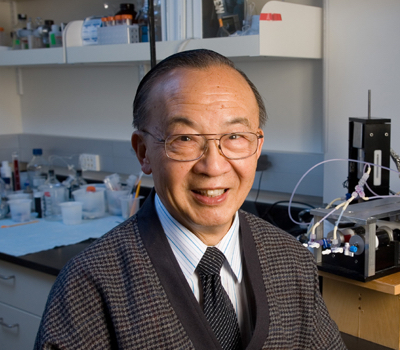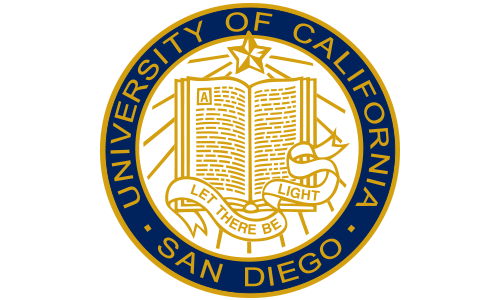Combining medicine and engineering to discover treatments for cardiovascular disease
Cardiovascular diseases such as heart attack and stroke are major causes of morbidity and mortality. According to the CDC, heart disease is the leading cause of death in the United States with approximately 600,000 deaths per year, accounting for one in every four deaths in the US. Improvements in the diagnosis, treatment and prevention of these diseases will benefit countless people, and the resulting improvements in patient health, well-being and productivity will have a major impact on society. Dr. Shu Chien of the University of California, San Diego's Institute of Engineering in Medicine is studying how vessel geometry and pressure affect flow patterns, and how that in turn affects gene and protein expressions in cells lining the blood vessels. This highly interdisciplinary work brings together engineering, biology and medicine to address the major health issue of cardiovascular disease and solve important clinical problems. His research spans from fundamental studies aimed at understanding the mechanisms that govern circulatory regulation to the clinical translation of novel discoveries.The results uncovered by this research have numerous implications for general cardiovascular health, both in the development of preventative measures as well as guidance for surgeons who are tasked with reconstructing or reconnecting vessels in the body. The strides Dr. Chien has made in this field were recognized by President Obama when in 2011 Dr. Chien was awarded the National Medal of Science, the only recipient out of seven nationwide who researches in an engineering discipline. Cardiovascular disease is a widespread problem that results in the death of more people than any other condition, and Dr. Chien is attacking this issue from unique perspectives.
Dr. Chien is investigating the mechanisms by which mechanical forces, such as flow and pressure, and the physical geometric structure of vessels, modulate the functions and structure of the circulatory system. He is taking this a step further, by looking at how that modulation alters the expression of certain genes and proteins in the cells surrounding blood vessels. Essentially, how does blood flow differently through altering vessel conditions and what are the changes that stem from differing blood flow patterns? Similar to water flowing in a river, blood will flow straight and generally uninterrupted through straight pathways of blood vessels. At forks or branches of the vessel, seen commonly throughout the body, the pattern of flow will create eddies and deviate from streamlines. Continuing this analogy, sand deposited at the bottom of a riverbed as result of the currents of water above it is reflective of the way plaque buildup in blood vessels is influenced by the flow of blood. Studying this flow will provide valuable insights into risk factors for cardiovascular disease. Dr. Chien is further working to understand how the conditions of a blood vessel's microenvironment will influence the gene and protein expressions by surrounding cells. Protein expression is generally controlled by the molecular and genetic factors within the cell, and which proteins are expressed differs in areas of different flow patterns. Proteins dictate the behavior and function of the cells, including growth, differentiation, and secretion, and differences in protein expression can be either positive or negative. Advances in mechanobiology and genetics have enabled Dr. Chien to explore this phenomena even deeper by looking at the epigenetic factors and micro-RNA strands that regulate gene and protein expressions. This research is a three-pronged approach with increasing detail: to understand the functions and structure of blood vessels, we must look at the proteins involved, and to understand the protein, we must look at the DNA and RNA involved. A unique and major emphasis of Dr. Chien's research is the interdisciplinary approach he uses, combining engineering, biology, and medicine to identify the molecular and cellular bases blood vessels utilize to maintain their normal function in healthy individuals, and to respond abnormally in individuals with disease. He is using precise medical techniques to locally manipulate the structure or condition of a blood vessel and study the changes that result from that disturbed flow.
Current research projects are looking at the circulatory system at a number of varied levels of detail, from the effects of blood flow patterns on genes and proteins to stem cells and genetic material:
- Dr. Chien is investigating the different mechanisms by which different kinds of flow patterns in blood vessels modulate, or influence, the genetic expression and protein synthesis in cells lining the blood vessels. Researching these changes will reveal how the molecules affected are modified by different flow patterns. For example, in areas of poor flow, typically seen at the branch points of vessels, Dr. Chien is working to suppress certain genes through therapeutic manipulation. In areas of positive or beneficial flow, genes and molecules are typically up-regulated, and Dr. Chien is searching for ways to enhance this. If both positive and negative mechanisms are identified, they can be used as specific targets for correcting a number of cardiovascular diseases.
-
Dr. Chien is researching the roles of epigenetics, changes in protein transcription that are not only the results of changes in gene transcription, but rather are also influenced by other factors acting on those genes, for example the microRNAs, which are short RNA strands that regulate longer, protein-coding RNA, to modulate cell function. When looking at changes in the structure and function of a blood cell, one must look not only at the proteins involved, and advances in molecular biology and genetics have allowed scientists to go a step further and study the genetic material responsible for protein transcription. Dr. Chien is interested in seeing what changes manifest in genetic material following, for instance, a change in pressure or flow. If, for example, blood flows from a narrow vessel to a region with a wider outflow, the flow will be disturbed, and Dr. Chien is looking at the effects of these changes on epigenetic factors, and thus protein expression. Identifying the mechanisms that influence both positive and negative effects of flow dynamics will allow for the development of therapeutic approaches. Therapeutic agents, i.e. drug molecules, can modify activity by enhancing or blocking microRNA abilities, if the proper genetic material can be identified.
-
Dr. Chien is looking at how the factors that comprise the microenvironment of a stem cell (flow dynamics, the substrate they sit on, their chemical environment) can determine the behavior of stem cells located in blood vessels, including the growth and differentiation of stem cells. He is testing this by using microarray systems, a "lab-on-a-chip" that allows for screening large amounts of data simultaneously. Dr. Chien places stem cells on an array of proteins (or synthetic polymers) with different compositions and observes the effects of varying protein combinations. This gives insight into which protein combinations may be optimal for guiding the differentiation of a stem cell into a specific cell type. Using a microarray system allows for the testing of hundreds of different protein matrixes in a high-throughput method that is far more efficient than traditional testing methods. The data from this project is being used to develop methods for most effectively guiding stem cell behavior, thus facilitating the further development of more complicated methods of influencing differentiation.
Bio
Dr. Chien was interested in math as a young child in elementary school, yet he decided to pursue medicine in college. This decision was influenced by his observation of doctors treating patients, and witnessing the joy and wonder of patients being cured of their medical afflictions. The fact that his mother was not in particularly good health at the time helped to enhance this desire. Dr. Chien was inspired by his professors in Taiwan while obtaining his medical degree: although they were greatly limited in financial support, access to funding, and infrastructure, they were extremely dedicated and passionate in spite of this, and it confirmed to Dr. Chien that he was on the correct path. It was just before he graduated from medical school though, that his childhood love of math reappeared, and he began exploring ways to incorporate more mathematics into the study of medicine.
It was at this point that he traveled to the US to pursue graduate studies in physiology. Still, there was not enough math incorporated for Dr. Chien's interests, so he began taking courses simultaneously in the school of engineering at Columbia University. He eventually satisfied his academic desires with a combination of fundamental biology, medicine, and engineering, which supplied an ample dose of mathematics. He worked in collaboration with several outstanding engineers, and the group shared the knowledge of their academic backgrounds, with Dr. Chien learning engineering concepts while imparting his understanding of biology and medicine to his engineer colleagues.
His interest in research started when he was a medical student in Taiwan. Today, he is researching the impact of mechanical forces on the circulatory system because of the desire to discover new ways to understand, diagnose, treat and prevent cardiovascular diseases. He is strongly motivated by his desire to help people improve their health and quality of life. The most important element of Dr. Chien's research, he discloses, is the people. The scientific community at UCSD that Dr. Chien finds himself in is ripe with eager young scientists, motivated teachers, and inspiring colleagues who all share the same goal: developing therapies and techniques to promote the well-being and improve the health of the general public. He admits that he is very fortunate to be in a profession that allows him to work directly with people and help them improve their quality of life. This keeps his life interesting, and adds a healthy reward to the work that he does.
In 2011, Dr. Chien's work was recognized by the President of the United States when he was awarded the National Medal of Science at a ceremony held at the White House. Each year, a presidentially-appointed committee of outstanding scientists and engineers choose around 10 recipients of the award working in the fields of sciences and engineering, awarded across a field of disciplines including biology, chemistry, medicine, mathematics, engineering, and physics. In 2011, the year Dr. Chien was honored with his award, there were only seven scientists selected, two in mathematics, two in chemistry, two in genetics/molecular biology, and only one from any of the engineering disciplines or physiology -- that researcher was Dr. Chien. "I was very fortunate and am very honored," says Dr. Chien, "to have had such a fantastic experience at the White House and to be honored by the President." In 2014, Dr. Chien was further honored by receiving the Roger Revelle Medal. The Medal honors a record of accomplishment that advances University of California, San Diego in fulfillment of the campus mission of exceptional teaching, research, service and patient care. In spite of all of this recognition, Dr. Chien remains humble and grounded, crediting his support cast, namely his wife, colleagues, and students, for driving him to succeed.
In the News
Taiwan Today


